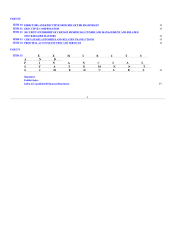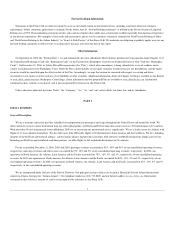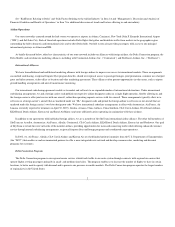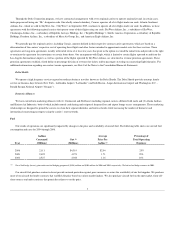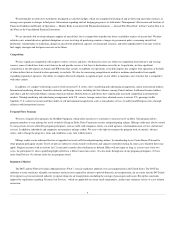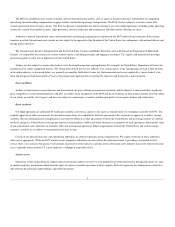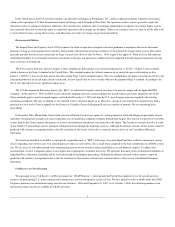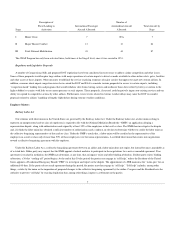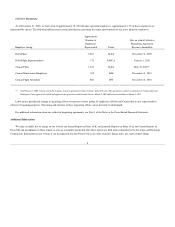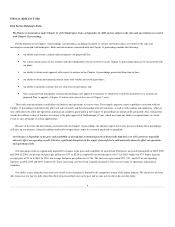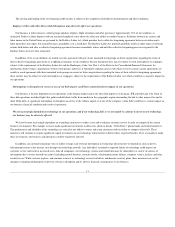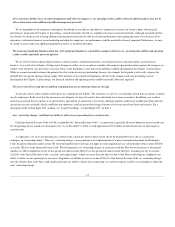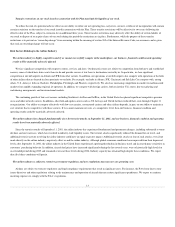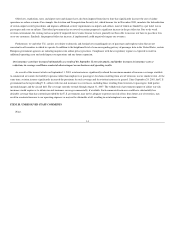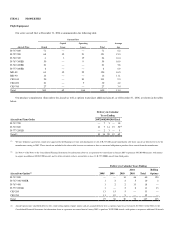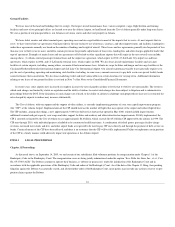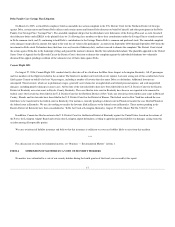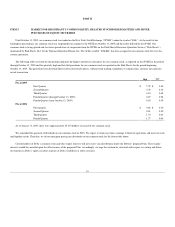Delta Airlines 2006 Annual Report Download - page 15
Download and view the complete annual report
Please find page 15 of the 2006 Delta Airlines annual report below. You can navigate through the pages in the report by either clicking on the pages listed below, or by using the keyword search tool below to find specific information within the annual report.
In addition, our aircraft fuel purchase contracts do not provide material protection against price increases or assure the availability of our fuel supplies.
We purchase most of our aircraft fuel under contracts that establish the price based on various market indices. We also purchase aircraft fuel on the spot
market, from offshore sources and under contracts that permit the refiners to set the price. To attempt to manage our exposure to changes in fuel prices, we
periodically use derivative instruments designated as cash flow hedges, which are comprised of heating oil and jet fuel swap and collar contracts, though we
may not be able to successfully manage this exposure. Depending on the type of hedging instrument used, our ability to benefit from declines in fuel prices
may be limited.
We are currently able to obtain adequate supplies of aircraft fuel, but it is impossible to predict the future availability or price of aircraft fuel. Weather-
related events, natural disasters, political disruptions or wars involving oil-producing countries, changes in governmental policy concerning aircraft fuel
production, transportation or marketing, changes in aircraft fuel production capacity, environmental concerns and other unpredictable events may result in
additional fuel supply shortages and fuel price increases in the future. Additional increases in fuel costs or disruptions in fuel supplies could have additional
negative effects on us.
Our substantial indebtedness may limit our financial and operating activities and may adversely affect our ability to incur additional debt to fund future
needs.
We will have substantial indebtedness even if our Plan is consummated. Our substantial indebtedness could have important consequences. For example,
our substantial indebtedness could:
•requireus to dedicate a substantial portion of cash flow from operations to the payment of principal, and interest on, indebtedness, thereby
reducing the funds available for other purposes;
•makeus more vulnerable to economic downturns, adverse industry conditions or catastrophic external events;
•limitour ability to withstand competitive pressures;
•reduceour flexibility in planning for or responding to changing business and economic conditions; and/or
•placeus at a competitive disadvantage to competitors that have relatively less debt than we have.
In addition, a substantial level of indebtedness could limit our ability to obtain additional financing on acceptable terms or at all for working capital,
capital expenditures and general corporate purposes. We have historically had substantial liquidity needs in the operation of our business. These liquidity
needs could vary significantly and may be affected by general economic conditions, industry trends, performance and many other factors not within our
control. Substantial indebtedness, along with other factors, will limit our ability to obtain financing to meet such liquidity needs.
Our exit financing credit facility will include financial and other covenants that will impose restrictions on our financial and business operations.
As part of the Plan, we expect to enter into an exit financing credit facility with various lenders from whom we have received commitments. This credit
facility will contain financial covenants that will require us to maintain a minimum fixed charge ratio, minimum unrestricted cash reserves and minimum
collateral coverage ratios. In addition, our exit financing credit facility will restrict our ability to, among other things, incur additional secured indebtedness,
make investments, sell assets if not in compliance with coverage ratio tests, pay dividends or repurchase stock. These covenants may have a material impact
on our operations. In addition, if we fail to comply with the covenants in the exit financing credit facility and are unable to obtain a waiver or amendment, an
event of default would result under the exit financing credit facility.
The exit financing credit facility is also expected to contain other events of default customary for financings of this type, including cross defaults to
certain other indebtedness and certain change of control events. If an event of default were to occur, the lenders could declare outstanding borrowings under
these agreements immediately due and payable. We cannot provide assurance that we would have sufficient liquidity to repay or refinance borrowings under
the exit financing credit facility if accelerated upon an event of default. In addition, an event of default or declaration of acceleration under the exit financing
credit facility could also result in an event of default under other indebtedness.
10


